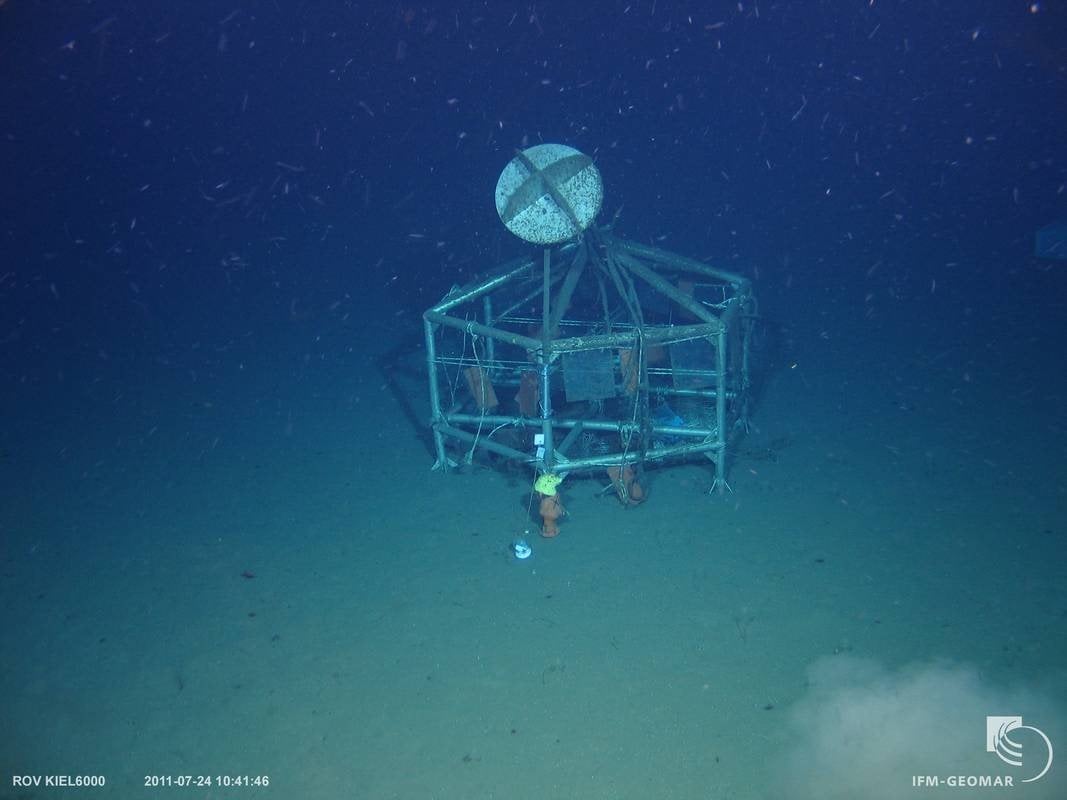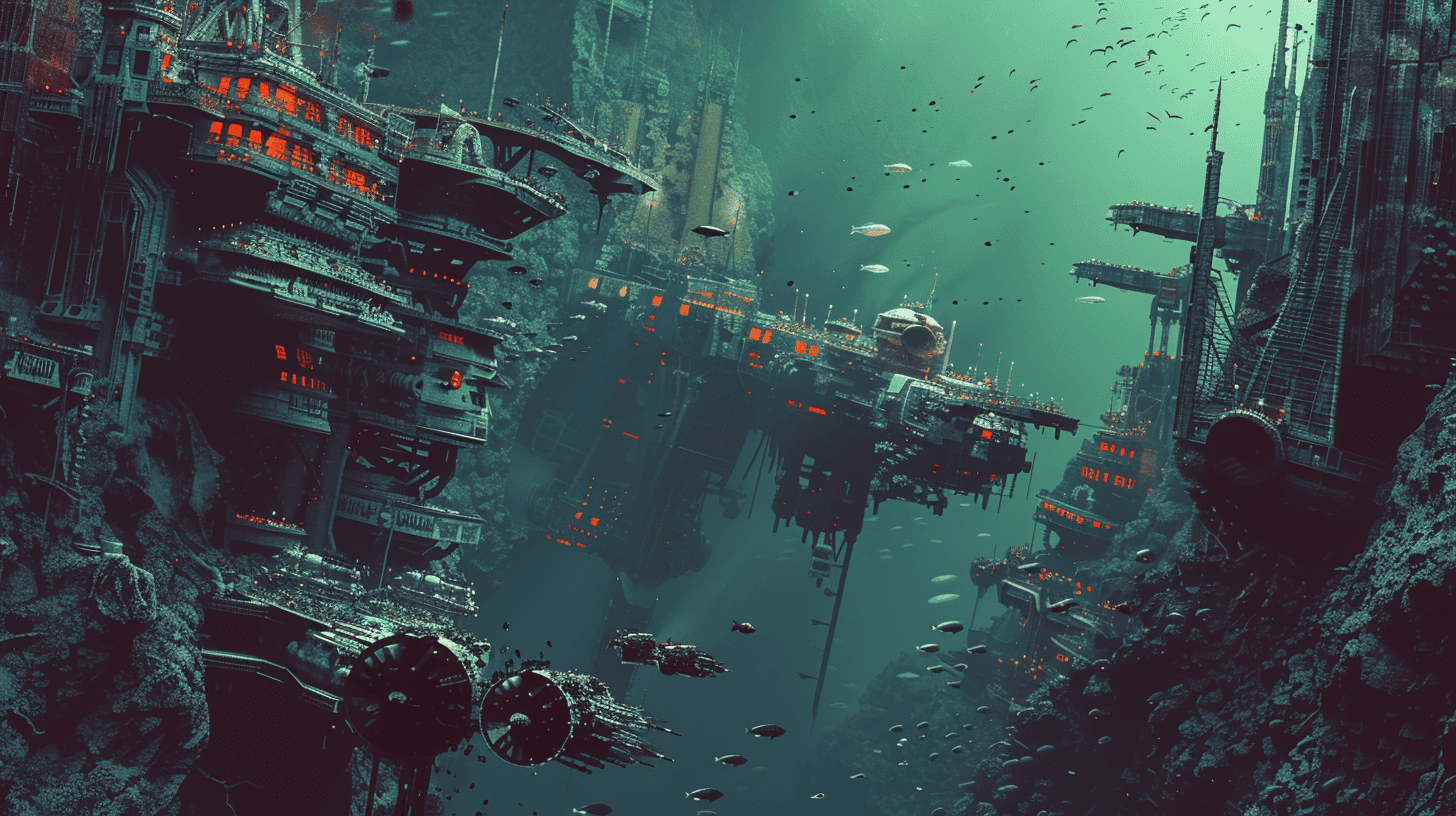
It’s a fascinating sight: underwater shots, in which feather stars and sea lilies sway their tentacles rhythmically with the movement of the water. These types of images from the Arctic depths stem from remote-controlled underwater vehicles, which roam the almost unattainable ground of the sea.
The marine species mentioned-above, belonging to the sponge species, are literally fused with their habitat. They live on so-called dropstones. These are stones or even entire boulders, which freeze on land into a glacier and are transported out into the sea by icebergs. As soon as the ice melts, the stones sink onto the bottom of the sea. There, they provide exactly the hard substrate, that many settled species rely on. They receive their nourishment from the water around them, using filtration or tentacles to catch it.
Deep Sea Observatory Hausgarten
Scientists at the Alfred-Wegener-Institute, Helmholtz-Centrum for Polar and Marine Research (AWI) are now researching, how long it takes, until the first settlers will settle in the Arctic deep sea. They also want to know, how the community develops after that. “So far, we know almost nothing about this”, explains Michael Klages from the AWI. Although there are some studies that investigated such questions in the Antarctic. However, these had focused on shallow areas in the ocean. These have different living conditions.
But now there are new findings from the deep-sea observatory by the name of Hausgarten. It is located in the Fram Strait between Svalbard and Greenland. The AWI is carrying out various long-term ecological investigations here.
For example, in July 1999, Michael Klages and his colleagues from the Deep Sea Research Group of the AWI placed a heavy metal frame with so-called settlement plates made of clinker bricks, plexiglas and wood on the sea floor. At a water depth of 2500 meters, this will provide foothold for settled deep-sea inhabitants. And then it was time for the researchers to wait and see what will happen.
Initially, they paid a few visits to the Dopstone imitation in 2003 and 2011 via remote controlled underwater vehicles. At the end of August 2017, they finally brought the frame back to the surface. The first author of the current scientific publication, Kirstin Meyer-Kaiser, who now works in the marine research institute Woods Hole Oceanographic Institution in the US state of Massachusetts, took the retrieved settlement plates “under the microscope”. She counted the individual organism, collected them and taxonomically classified them

Colonization from Unicellular to Multicellular in Slow Motion
“In this experiment we have seen that the colonization of such habitats in the Arctic deep sea is extremely slow,” summarizes Michael Klages. After four years, only unicellular organisms from the group of foraminifera had appeared on the plates. After twelve years only one multicellular animal, the polyp Halisiphonia arctica, had been added. And even after 18 years, the number of invertebrate multicellular organisms was limited to just 13 species.
From this modest yield, however, the researchers do not conclude that the natural hard substrates are not important habitats – quite the opposite: “Without them, many sedentary animals in the Arctic deep sea would not exist”, emphasizes Michael Klages. The meanwhile omnipresent civilization garbage in the oceans does not seem to be a good substitute. Although the AWI team has already seen a plastic bottle on which a sea-lily grew in the pictures taken by remote-controlled underwater vehicles. “This is how we came up with the idea of also using plexiglass plates in our experiment,” explains the researcher. “We wanted to see whether these could be colonized just as well as a near-natural subsoil”. This is however not the case. After 18 years, considerably fewer animals were found on the plastic than on the clinker bricks.
Sensitive Ecosystems
However, the latter could by no means keep up with a neighboring rocky reef, where 65 different invertebrates could be detected. It is therefore possible, that almost two decades were not enough to achieve the theoretically possible species diversity on the plates. The mentioned reef, on the other hand, is much older and had more time to attract a larger range of inhabitants.
The results thus also provide important insights into the sensitivity of deep-sea ecosystems.
If disturbances there eliminate the sedentary inhabitants on the seabed, it will probably take decades for the community to recover from them…”
…warns Michael Klages. In the Arctic, such disturbances can for instance occur through fishing, drilling for oil and gas. But much more far-reaching consequences are to be expected, for example, in the depths of the Pacific, where manganese nodules are to be mined over large areas in the future.
The work of the scientists was recently published in Limnology and Oceanography 2019.








